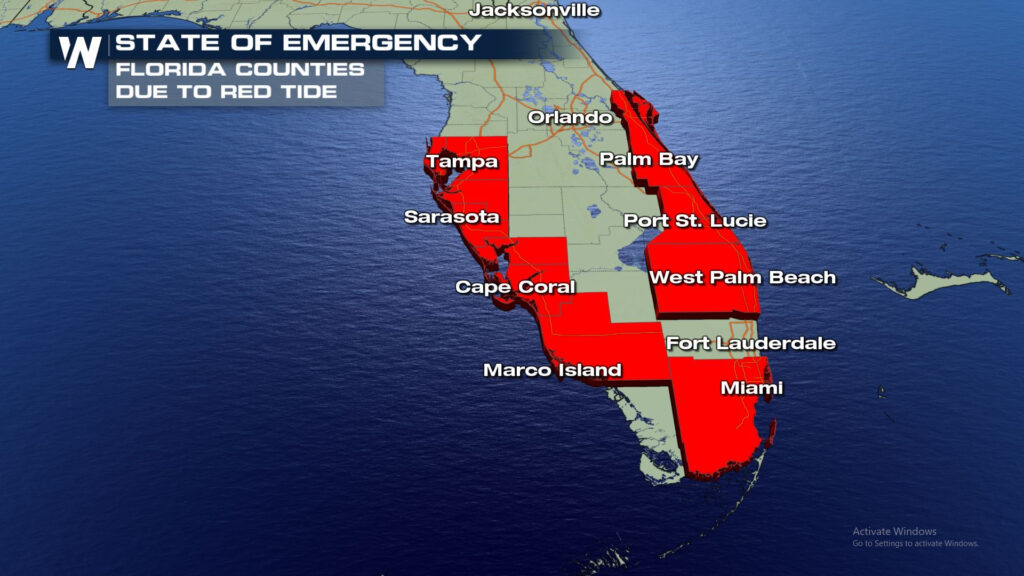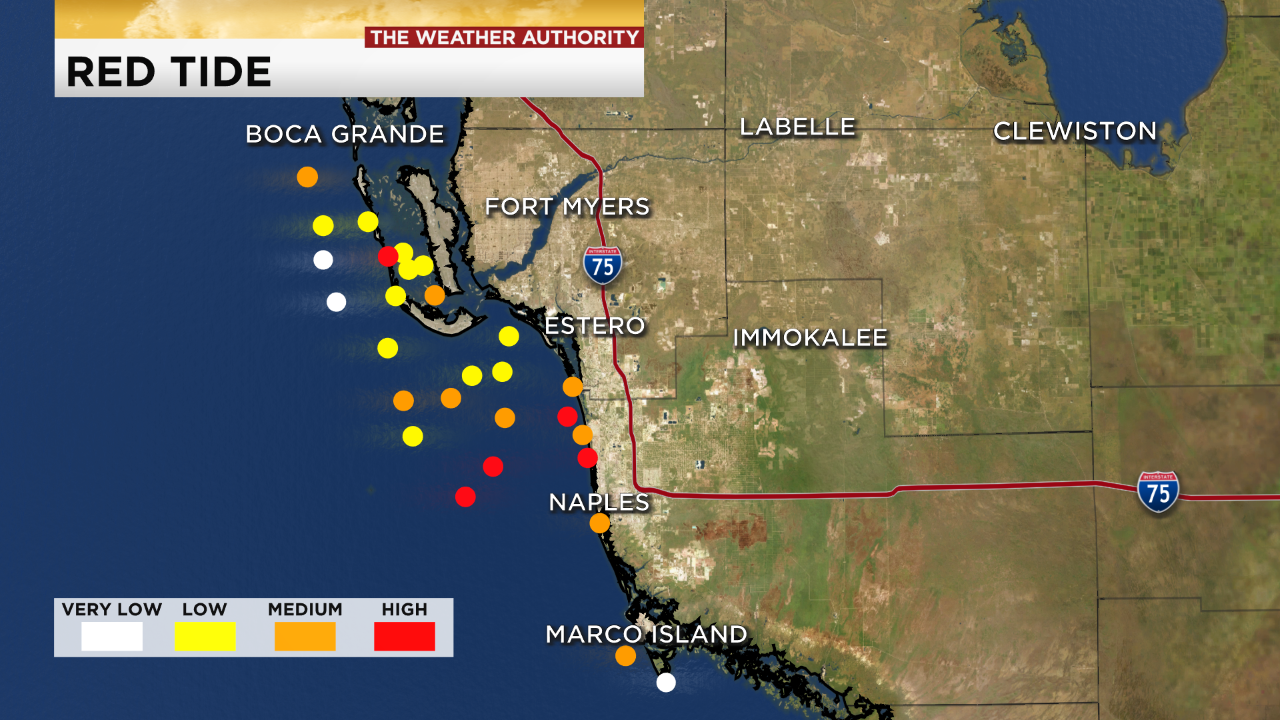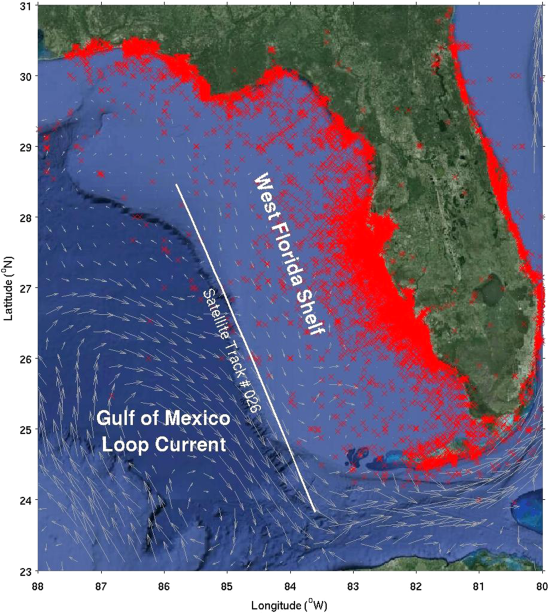Navigating the Purple Tide Menace: A Complete Information to Florida’s Purple Tide Map and its Influence
Associated Articles: Navigating the Purple Tide Menace: A Complete Information to Florida’s Purple Tide Map and its Influence
Introduction
On this auspicious event, we’re delighted to delve into the intriguing matter associated to Navigating the Purple Tide Menace: A Complete Information to Florida’s Purple Tide Map and its Influence. Let’s weave fascinating data and provide contemporary views to the readers.
Desk of Content material
Navigating the Purple Tide Menace: A Complete Information to Florida’s Purple Tide Map and its Influence

Florida’s gorgeous shoreline, a magnet for vacationers and residents alike, is periodically threatened by a pure phenomenon with devastating penalties: crimson tide. Understanding this dangerous algal bloom, its geographic attain, and the assets out there to trace its development is essential for safeguarding each human well being and the state’s important ecosystem. This text delves into the intricacies of Florida’s crimson tide map, explaining its function, methods to interpret it, and the broader influence of this recurring environmental problem.
Understanding Purple Tide: Extra Than Only a Reddish Hue
Purple tide, scientifically generally known as a dangerous algal bloom (HAB), is brought on by a microscopic dinoflagellate, Karenia brevis. These single-celled organisms naturally happen within the Gulf of Mexico, however below particular environmental situations – resembling heat waters, nutrient runoff, and calm seas – they’ll proliferate exponentially, resulting in huge blooms. The "crimson" in crimson tide refers back to the reddish-brown discoloration of the water brought on by the excessive focus of Okay. brevis cells. Nonetheless, not all blooms are visibly crimson; some can seem as a greenish-brown and even stay undetectable to the bare eye.
The hazard of crimson tide extends far past its aesthetic influence. Okay. brevis produces potent neurotoxins that may have an effect on marine life and people. These toxins may cause respiratory irritation in people, resulting in coughing, sneezing, and issue respiratory, significantly for people with pre-existing respiratory situations like bronchial asthma. Moreover, the toxins accumulate in shellfish, rendering them unsafe for consumption. Fish kills are a standard and devastating consequence of crimson tide blooms, with hundreds of marine animals – from small fish to bigger mammals like manatees – succumbing to the consequences of the toxins. The financial influence on fishing industries, tourism, and coastal communities could be substantial and long-lasting.
Decoding Florida’s Purple Tide Map: A Important Useful resource
The Florida Fish and Wildlife Conservation Fee (FWC) maintains a real-time crimson tide map that is a useful useful resource for residents, guests, and researchers alike. This interactive map offers vital details about the situation, depth, and extent of crimson tide blooms alongside Florida’s coastlines. The map is up to date recurrently, usually every day, utilizing knowledge collected from varied sources, together with:
- Satellite tv for pc imagery: Satellites geared up with sensors can detect chlorophyll concentrations within the water, offering a broad overview of bloom areas and extent.
- Water sampling: FWC scientists and researchers acquire water samples from varied areas alongside the coast. These samples are analyzed in laboratories to find out the focus of Okay. brevis cells and the presence of poisons.
- Citizen experiences: The general public performs an important function in monitoring crimson tide. Residents can report observations of crimson tide to the FWC, offering helpful ground-level knowledge to complement satellite tv for pc and laboratory findings.
The map sometimes makes use of a color-coded system to characterize the focus of Okay. brevis cells:
- Low: Signifies a comparatively low focus of Okay. brevis, with minimal to no noticeable impacts.
- Medium: Suggests a reasonable focus, probably inflicting some respiratory irritation in delicate people and minor fish kills.
- Excessive: Signifies a excessive focus of Okay. brevis, probably inflicting vital respiratory irritation, substantial fish kills, and potential shellfish closures.
- Very Excessive: Represents extraordinarily excessive concentrations of Okay. brevis, related to extreme respiratory irritation, widespread fish kills, and vital impacts on marine ecosystems.
The map additionally contains details about the presence of respiratory irritation, fish kills, and shellfish harvesting closures. This complete strategy permits customers to evaluate the potential dangers related to particular coastal areas. The FWC web site additionally offers detailed explanations of the color-coding system and different data related to deciphering the map.
Past the Map: Understanding the Broader Context
Whereas the crimson tide map offers an important snapshot of the present scenario, understanding the broader context is equally vital. Components influencing the event and persistence of crimson tide blooms are advanced and interconnected:
- Nutrient air pollution: Runoff from agricultural lands, city areas, and wastewater remedy vegetation introduces extra vitamins (nitrogen and phosphorus) into coastal waters, fueling algal progress.
- Ocean currents and winds: Ocean currents and wind patterns play a major function in transporting and dispersing crimson tide blooms, influencing their location and depth.
- Water temperature: Heat water temperatures usually favor the expansion of Okay. brevis.
- Salinity: The salinity of the water additionally influences the expansion and distribution of Okay. brevis.
Addressing these underlying components is essential for mitigating the frequency and severity of crimson tide blooms. Efforts to cut back nutrient air pollution via improved wastewater remedy, sustainable agricultural practices, and accountable land administration are important for long-term options.
Impacts and Mitigation Methods:
The impacts of crimson tide lengthen far past the speedy environmental penalties. The financial repercussions are vital, affecting tourism, fishing, and different coastal industries. The closure of seashores and shellfish harvesting areas leads to misplaced income for companies and communities. The well being impacts on residents and guests could be extreme, significantly for these with respiratory situations.
Mitigation methods deal with each short-term responses and long-term options:
- Seaside closures and advisories: Closing seashores and issuing advisories during times of excessive crimson tide focus helps defend public well being.
- Shellfish harvesting closures: Closing shellfish harvesting areas prevents the consumption of contaminated shellfish, safeguarding public well being.
- Analysis and monitoring: Continued analysis into the causes and dynamics of crimson tide is essential for creating efficient mitigation methods. Enhanced monitoring applications present helpful knowledge for predicting and managing blooms.
- Nutrient discount methods: Implementing measures to cut back nutrient air pollution from varied sources is a vital long-term resolution.
- Improvement of revolutionary applied sciences: Researchers are exploring revolutionary applied sciences, resembling clay utility, to assist mitigate crimson tide blooms.
Using the Purple Tide Map Successfully:
To successfully make the most of the Florida crimson tide map, contemplate the next:
- Usually examine the map: The map is up to date regularly, so common checks are important to remain knowledgeable concerning the present scenario.
- Perceive the color-coding system: Familiarize your self with the color-coded system to know the severity of the bloom in several areas.
- Take into account respiratory sensitivities: People with respiratory sensitivities ought to take further precautions when visiting areas with excessive or very excessive crimson tide concentrations.
- Verify shellfish advisories: At all times examine for shellfish harvesting closures earlier than consuming shellfish from coastal areas.
- Report observations: When you observe indicators of crimson tide, report your observations to the FWC to assist enhance the accuracy of the map and support in monitoring efforts.
Conclusion:
Florida’s crimson tide map serves as a vital instrument for navigating the challenges posed by this recurring environmental phenomenon. By understanding methods to interpret the map and the broader context of crimson tide, people, companies, and policymakers can work collectively to attenuate its impacts and attempt for a extra sustainable future for Florida’s valuable coastal ecosystems. Continued analysis, accountable land administration, and public consciousness are important parts in mitigating the devastating results of crimson tide and defending the well being and well-being of Florida’s communities and its distinctive pure assets.








Closure
Thus, we hope this text has supplied helpful insights into Navigating the Purple Tide Menace: A Complete Information to Florida’s Purple Tide Map and its Influence. We recognize your consideration to our article. See you in our subsequent article!